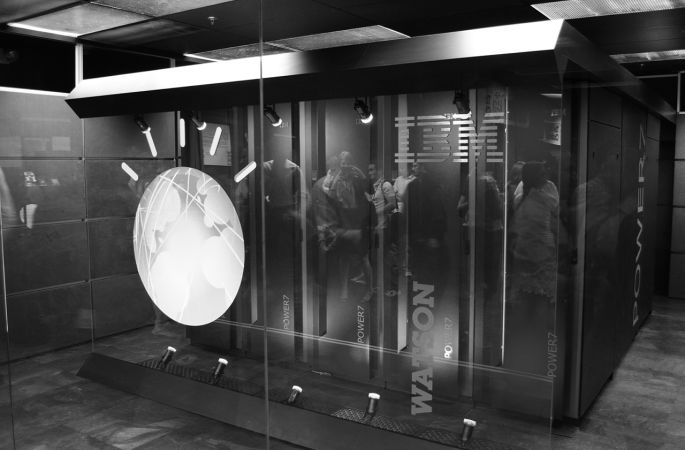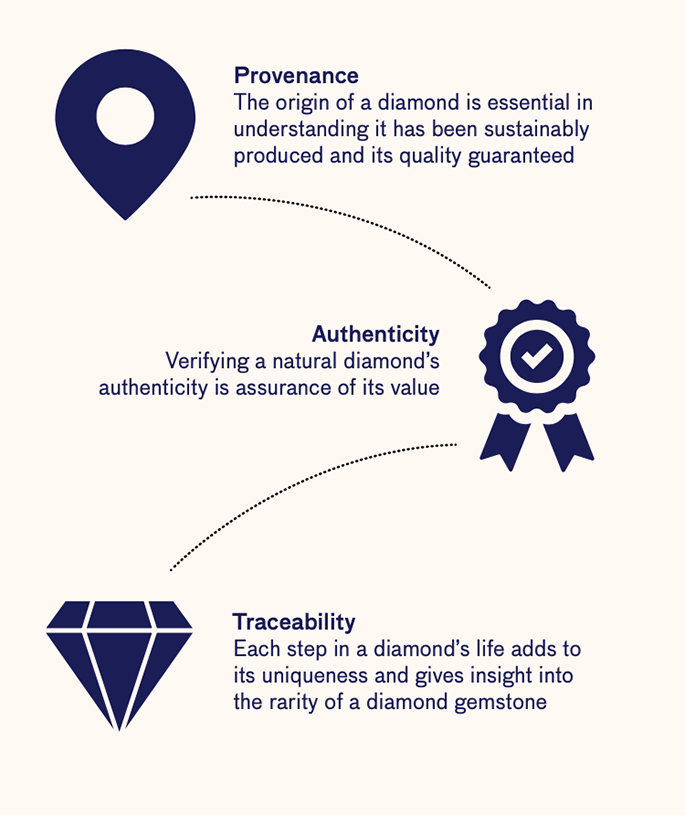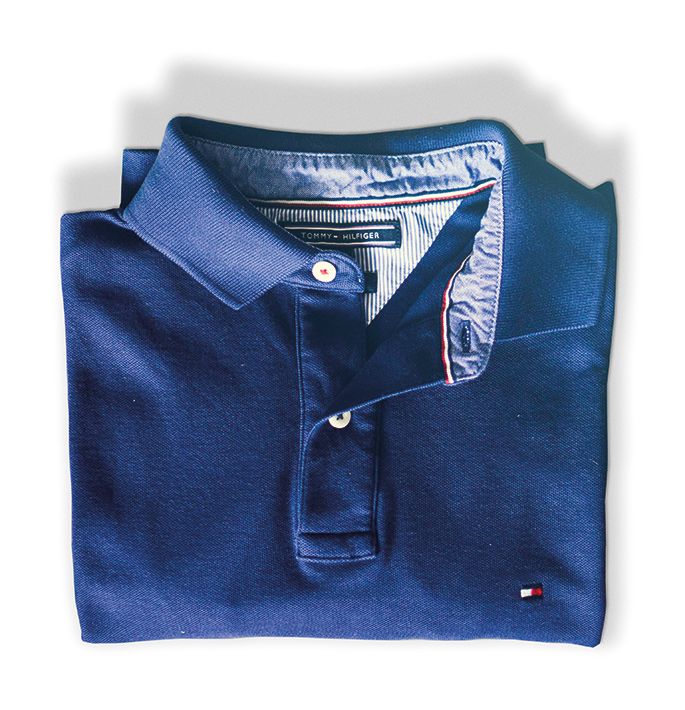
The Impact of Technology on the Global Fashion Supply Chain
As consumers continue to expect shorter production cycles and personalized products with an elevated consciousness for sustainable and price-sensitive fashions, being on trend is no longer enough. Fashion brands must harness the power of technology to innovate the global fashion supply chain.
The concept of a supply chain, an ecosystem of suppliers and business processes working toward the creation, production, and distribution of goods or services, appeared in publication form as early as the Art of War, written in 1838 by Baron Antoine-Henri Jomini. While the idea was referred to as “procurer logistics” and applied to a single market, the concept is the same today and can be generalized. Among the critical changes is a good or service that evolves today from the design phase to being a consumable good or service has been dramatically transformed by the power of technology.
Technological advancements have always played a major role in the evolution of fashion and related industries. This includes the revolutionary 1850 invention of the sewing machine that extended garment production beyond the capabilities of handsewn items to the 1956 innovation of consistently-sized crates eventually leading to standard steel shipping containers for price-efficient global distribution. As we fast forward, it is undeniable that Microsoft’s release of Internet Explorer 1.0 in 1995 laid the foundation for the e-commerce fashion boom that has forever changed the way in which consumers engage with fashion. Less than twenty years later, 58% of the global online population has made an online purchase in the last twelve months, with approximately half of the items falling into the fashion (clothes or footwear) category.
What has changed, and where is this changing leading us?
It is impossible to truly address this question without unpacking the individual technology drivers. And it is interesting to note that fashion is one of the industries that is being transformed, with significant impact on society, and yet without deep exploration such as exists in Healthcare, Education, and Environmental Sustainability. How in fact is fashion changing the use of technology? And conversely, how are 3D Printing, Artificial Intelligence, Blockchain, and Advanced Materials changing fashion, including the way we live and work?
3D Printing
This process utilizes 3D modeling data and rapid prototyping to produce objects by layering polymers, a flexible and durable plastic material. Since the introduction of 3D printing into the supply chain, the polymers have advanced to enable the creation of garments that are able to be worn. These garments resemble properties of actual material, and can be produced within a vastly compressed time period (hours rather than days or weeks).
Traditional Garment Construction | Additive Manufacturing: 3D Printing |
|---|---|
Scraps and waste left at the end of the process | Zero waste |
Limited construction capabilities | Able to achieve complex garment construction |
Personalization requires costly, potentially time-consuming tasks | Personalization achieved with the ease of programming |
The impact has been abetted by the fact that the price of 3D printers has also dramatically decreased, enabling increased reach and sophistication, including new forms of specialization and sub-specialization on the supply side. On the demand side, we notice that the “zero waste” that is a hallmark of 3D printing is attracting new consumers, as is the personalization of customization of size, fit, and design. From this perspective, the addition of 3D Printing to clothing can almost be thought about as an external signal of identity, not too different from the tattoos used by some people to signal their interests, affiliations, and values.
Meeting the social change that is both cause and effect of the personalization phenomenon, commercial drivers include brands such as Adidas AG, ECCO Sko AS, New Balance, Nike Inc, and Under Armour Inc., who are incorporating 3D printing design elements into their production as a way to differentiate (in this case, based on fit). Nike, for example, produced its Vapor Ultimate Cleat American football boot using 3D printing to meet the specific needs of the individual athlete.
Artificial Intelligence
As we think about the effects of AI on the global fashion supply chain, there are revolutionary implications to critical areas of fashion, such as inventory management, design selection, merchandise planning, and the consumer experience. Based on research from McKinsey & Co., for example, an AI-based forecasting approach could reduce planning errors by up to 50 percent, while overall inventory reduction of 20 to 50 percent is feasible. Analyzing key data points which reveals heretofore invisible data as to what a consumer buys, how, and where, the use of AI enables brands to develop customer profiles and inventory management parameters that support a brand’s ability to get the right product to the right consumer at the right price and time.
IBM’s Watson computer

15,000
A product library of 15,000 images
600,000
600,000 publicly available runway clips
100,000
Close to 100,000 pattern samples
As a practical level, the Fashion Institute of Technology (FIT) in 2018 partnered with IBM Watson and Tommy Hilfiger to produce a sweater of the future. The project utilized the analytical capabilities of IBM Watson, including computer vision, natural language understanding, and deep learning techniques to evaluate consumer preference trends for sweaters. The trend information came from the Tommy Hilfiger product library of 15,000 images, some 600,000 publicly available runway clips, and close to 100,000 pattern samples. Imagine the volume of data. And yet, from this data – accessible for among the first times – FIT students were able to develop AI-generated insights to create sweater designs that were reflective of the brand’s heritage brought down to the level of the individual.
In addition to inventory management capabilities, AI also is being used by brands to support customer service functions based on planning and learning from previous mistakes and selections concerning an individual’s likes and dislikes. A level deeper, chatbots enable brands to deliver a cost-efficient, white-glove service instead of the disappointment often felt when speaking with a call center that is relying on customer data with a time and information lag. For example, H&M uses chatbots as a concierge service that helps shoppers with styling selections, remembering previous purchases, and sharing their favorite looks on social media. Of course, the chatbot is available to service a shopper’s need on a 24-hour basis without the requirement of a break. As of 2018, industry data drawn suggests that nearly 2/3 of millennials – 67% – prefer to purchase from that brands that use chatbots. This is but one indicator of a transformative trend in terms of labor and impending shifts in the labor force, consumer behavior linked to consumption patterns, and the implications for rising demand in the face of more accessible and “authentic” supply.
Blockchain
Due to the fragmented nature of the logistics industry, the existence of numerous supply chain-related legacy systems that are often incompatible, coupled with the complexities of managing multiple relationships, there are a ton of inhibitors that work against an efficient flow of supply chain information.
Among the areas of potential change is the counterfeit fashion market. And yet, blockchain provides a reasonable means to address this problem in a cost- efficient and highly accurate manner.
Blockchain’s value is its ability to increase the speed, accuracy, and access to the complexity of managing information throughout a global supply chain that includes factory labor, logistics providers, insurance agents, trade attorneys, and brokers. For example, the shipment of a refrigerated good from East Africa to Europe potentially encounters approximately 30 people or entities, with more than 200 unique interactions and communications.1 Each touch by an intermediary is an added cost, a period of time, and a possible point of handling error.
Given its collaborative nature, a blockchain’s value is of course highly dependent upon the adoption of other industry players to the platform. The world’s largest diamond producer by value, De Beers, has launched Tracr, a diamond industry blockchain that has the potential to bring onto the platform 60% of India’s informal diamond industry. Tracr will have the ability to manage the entire diamond product process for the precious stones with weights between 5 and 10.8 carats.2
Three Examples of Advanced Materials:
- Sustainable — textiles that reduce the negative environmental impact of fashion products by means of using recycled materials or materials that are easily biodegradable.
Novel Technical — materials with benefits such as being stretchable, moisture wicking, and temperature controlled.
Embedded with Sensors — capable of connecting with other devices, collects body and environmental information, and able to change color and/or appearance.
Applications range from tracing (and ideally preventing) human labor violations to eliminating counterfeits as the diamond is tracked, beginning with the mining phase.
Advanced Materials
The research lab is not limited to fields like neuroscience and computer science. Due to advancements in textiles that include wearables, also known as smart textiles, material sourcing is being transformed through the control of external stimuli such as stress, moisture, electric or magnetic fields, light, temperature, pH, or chemical compounds. This growth is being spurred by the adoption of these textiles in sectors such as healthcare, sports and fitness, the military, and automotive. As consumers continue to gravitate to garments and products that go beyond traditional usage of fashion, the smart textiles market is expected to reach $4.72 billion by 2020.
At a practical level, wearable garments made a big introduction into the commercial market by Ralph Lauren during the Opening Ceremony of the Rio 2016 Olympic Games. The Team USA flag-bearers wore classic Polo styled blue jackets that included electroluminescent panels. While this is just a first step, without much societal, health, or lasting social significance, the jacket represented Ralph Lauren’s continued commitment to being trailblazers in fashion by means of design and innovation. And innovation continues – by the 2018 Winter Olympics, Ralph Lauren had dressed the USA flag- bearers with adaptable heat technology that could be controlled by a smartphone app.
The Fashion Institute of Technology is actively driving research and working to commercialize products in this area. The school is a member of the Advanced Functional Fabrics of America (AAFOA), a non-profit institute located near its host organization, the Massachusetts Institute of Technology. By partnering with US member organizations that design, model, measure, supply, or integrate fibers, yarns, fabrics, and textile products, AAFOA lives out its mission to transform fiber materials and manufacturing processes that have barely changed in over a thousand years.
Most recently, as part of the educational focus of the organization, AAFOA supported a student immersion program between FIT and MIT where design and engineering students collaborated on the creation of advanced material products to solve the performance issue of sneaker design while also designing an environmentally friendly sneaker made out of a disposable material for the sole. Initiatives such as the MIT and FIT student project are training the future workforce on the benefits and capabilities of the application of advanced materials.
Tracr’s model for tracing diamonds


Looking Forward
A consistent theme, in fashion as in other leading industries, is that successful supply chains can get the right product to the right consumer at the right price and time. As we look at the growing demands of consumers, such as the trend for customization over mass-production, the concept of a seasonless selling cycle that replaces the traditional windows of production with an ongoing design process, and the continuous focus on sustainable goods, it is clear that fashion and the fashion supply chain will continue to evolve to meet the ongoing demands of the consumer. On the supply side, technologies such as 3D printing, artificial intelligence, blockchain, and advanced materials are supporting a more sustainable manufacturing and distribution process. They are creating a change and an opportunity that are – unlike healthcare and education – uniquely global.
References
McKendrick, Joe, “5 Reasons to Blockchain Your Supply Chain,” Forbes. March 19, 2018
Sharma, Manoj, “De Beers to Launch the First Diamond Blockchain; Here’s How it Will Work,” Business Today. August 3, 2018
